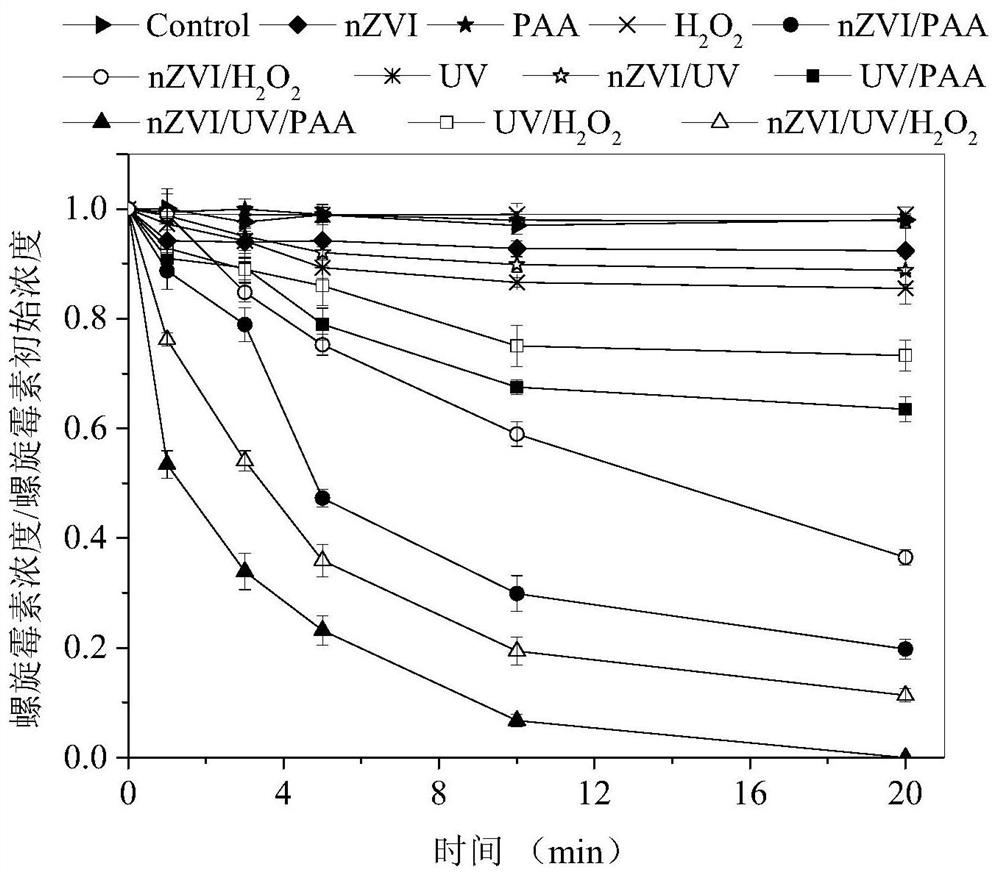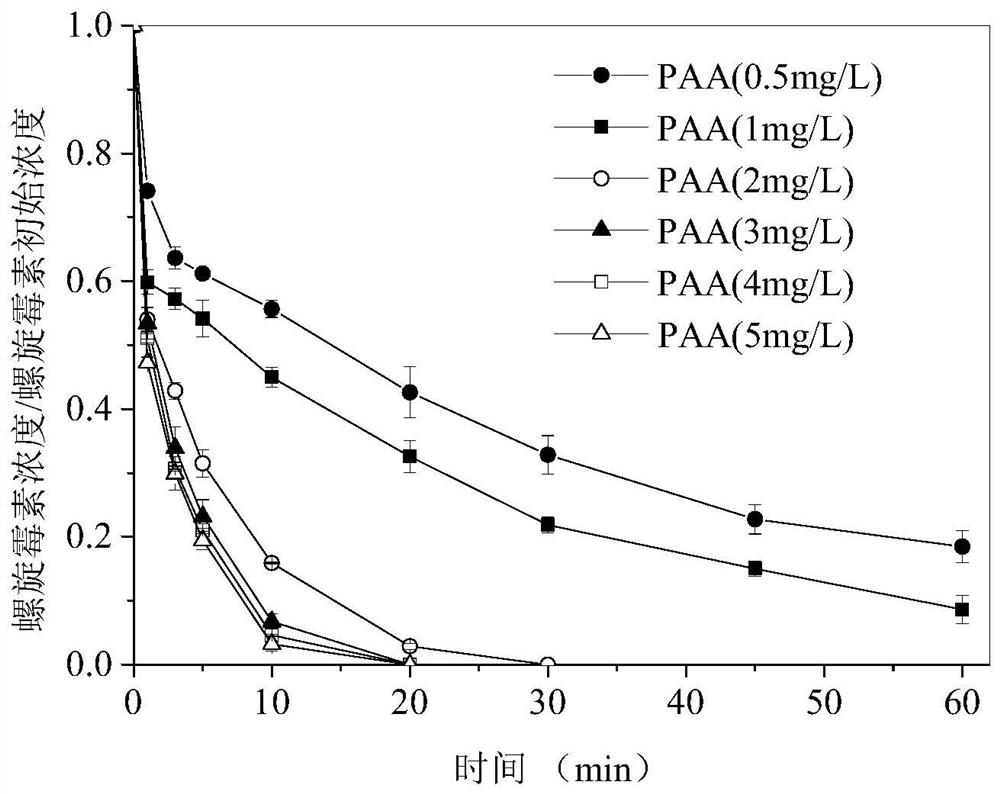Method for synergistically degrading refractory organic matters in village and town sewage by using hydrogen peroxide component in low-concentration peracetic acid
A technology of refractory organic matter and peracetic acid, applied in the direction of oxidized water/sewage treatment, chemical instruments and methods, water pollutants, etc., can solve problems such as poor effect, achieve cost reduction, good reusability, and shorten process Effect
- Summary
- Abstract
- Description
- Claims
- Application Information
AI Technical Summary
Problems solved by technology
Method used
Image
Examples
Embodiment 1
[0038] This example provides a method for synergistically degrading refractory organic matter in village and town sewage by utilizing the hydrogen peroxide component in low-concentration peracetic acid, making full use of the hydrogen peroxide component in low-concentration peracetic acid to cooperate with peracetic acid to degrade village and town sewage Medium refractory organics, including the following steps:
[0039] (1) Turn on the 254nm low-pressure mercury lamp for 30 minutes to ensure a stable output of ultraviolet radiation, and the power of the low-pressure mercury lamp is 10W.
[0040] (2) 40mL of spiramycin solution with 0.1M dilute sulfuric acid solution to control the initial pH of the solution is 4 to prepare an initial concentration of 10mg / L in a quartz tube, then immediately add a certain amount of peracetic acid to make its concentration 3mg / L (when When the effective concentration of PAA is controlled at 3mg / L, the H contained in the low-concentration PAA ...
Embodiment 2
[0045] This example provides a method for synergistically degrading refractory organic matter in village and town sewage by utilizing the hydrogen peroxide component in low-concentration peracetic acid, making full use of the hydrogen peroxide component in low-concentration peracetic acid to cooperate with peracetic acid to degrade village and town sewage Medium refractory organics, including the following steps:
[0046] (1) Turn on the 254nm low-pressure mercury lamp for 30 minutes to ensure a stable output of ultraviolet radiation, and the power of the low-pressure mercury lamp is 10W.
[0047] (2) 40mL of spiramycin solution with 0.1M dilute sulfuric acid solution to control the initial pH of the solution is 4 to prepare an initial concentration of 10mg / L in a quartz tube, then immediately add a certain amount of peracetic acid to make its concentration 3mg / L (when When the effective concentration of PAA is controlled at 3mg / L, the H contained in the low-concentration PAA ...
Embodiment 3
[0052] This example provides a method for synergistically degrading refractory organic matter in village and town sewage by utilizing the hydrogen peroxide component in low-concentration peracetic acid, making full use of the hydrogen peroxide component in low-concentration peracetic acid to cooperate with peracetic acid to degrade village and town sewage Medium refractory organics, including the following steps:
[0053] (1) Turn on the 254nm low-pressure mercury lamp for 30 minutes to ensure a stable output of ultraviolet radiation, and the power of the low-pressure mercury lamp is 10W.
[0054] (2) 40mL of spiramycin solution with 0.1M dilute sulfuric acid solution to control the initial pH of the solution is 4 to prepare an initial concentration of 10mg / L in a quartz tube, then immediately add a certain amount of peracetic acid to make its concentration 3mg / L (when When the effective concentration of PAA is controlled at 3mg / L, the H contained in the low-concentration PAA ...
PUM
| Property | Measurement | Unit |
|---|---|---|
| concentration | aaaaa | aaaaa |
Abstract
Description
Claims
Application Information
 Login to View More
Login to View More - R&D
- Intellectual Property
- Life Sciences
- Materials
- Tech Scout
- Unparalleled Data Quality
- Higher Quality Content
- 60% Fewer Hallucinations
Browse by: Latest US Patents, China's latest patents, Technical Efficacy Thesaurus, Application Domain, Technology Topic, Popular Technical Reports.
© 2025 PatSnap. All rights reserved.Legal|Privacy policy|Modern Slavery Act Transparency Statement|Sitemap|About US| Contact US: help@patsnap.com



